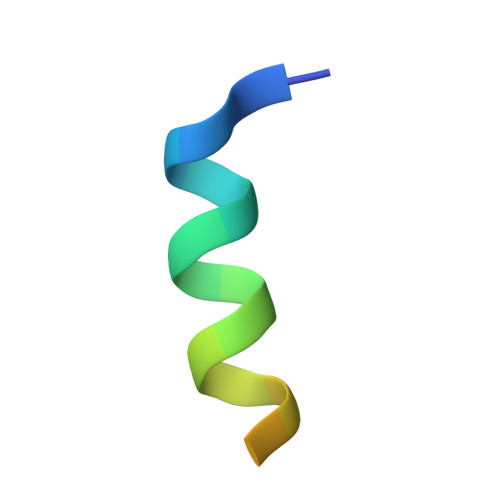Discovery of Second Generation ROR gamma Inhibitors Composed of an Azole Scaffold.
Kotoku, M., Maeba, T., Fujioka, S., Yokota, M., Seki, N., Ito, K., Suwa, Y., Ikenogami, T., Hirata, K., Hase, Y., Katsuda, Y., Miyagawa, N., Arita, K., Asahina, K., Noguchi, M., Nomura, A., Doi, S., Adachi, T., Crowe, P., Tao, H., Thacher, S., Hashimoto, H., Suzuki, T., Shiozaki, M.(2019) J Med Chem 62: 2837-2842
- PubMed: 30776227
- DOI: https://doi.org/10.1021/acs.jmedchem.8b01567
- Primary Citation of Related Structures:
6IVX - PubMed Abstract:
Starting from a previously reported RORγ inhibitor (1), successive efforts to improve in vivo potency were continued. Introduction of metabolically beneficial motifs in conjunction with scaffold hopping was examined, resulting in discovery of the second generation RORγ inhibitor composed of a 4-(isoxazol-3-yl)butanoic acid scaffold (24). Compound 24 achieved a 10-fold improvement in in vivo potency in a mouse CD3 challenge model along with significant anti-inflammatory effects in a mouse dermatitis model.
Organizational Affiliation:
Graduate School of Medical Science , Kyoto Prefectural University of Medicine , 1-5 Shimogamo-hangi-cho , Sakyo-ku , Kyoto 603-0823 , Japan.
















